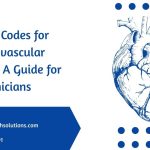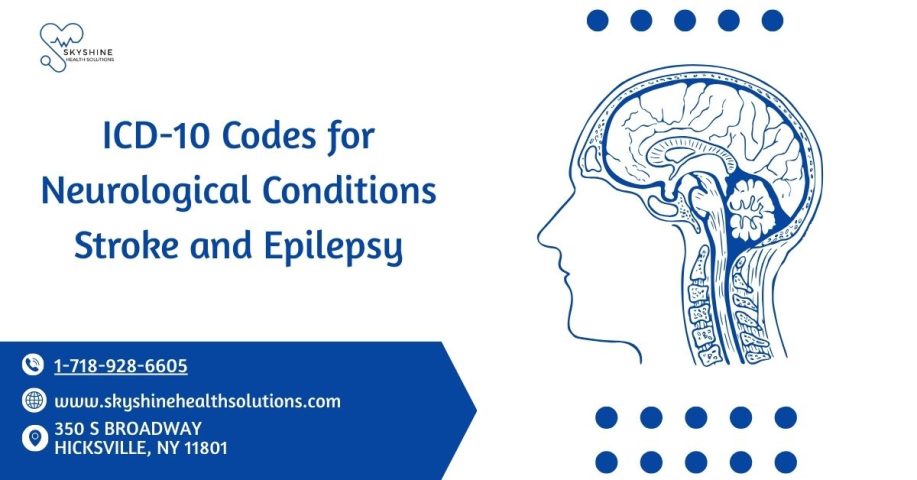
What’s New in ICD-10 Updates for 2025
July 28, 2025
ICD-10 Codes for Cardiovascular Diseases: A Guide for Clinicians
August 11, 2025Neurological disorders, such as stroke and epilepsy, require precise coding to reflect their complexity. Accurate ICD-10 coding for neurological conditions is vital for clinicians to ensure proper documentation, reimbursement, and patient care coordination. Coding errors can lead to claim denials, compliance issues under HIPAA and CMS regulations, or misinformed care decisions. In ICD-10-CM, G00-G99 chapter covers diseases of the nervous system, including complex conditions like stroke and epilepsy. Understanding these chapters is essential for clinicians managing these conditions. This guide simplifies these codes, offering practical tips for clinicians to avoid errors and improve coding accuracy.
Key ICD-10 Codes for Stroke and Epilepsy
The G00-G99 chapter includes codes for many different neurological conditions.
Here are some important codes for stroke and epilepsy, which are common diagnoses:
-
-
I63.9: Cerebral infarction, unspecified. Used for ischemic stroke when specific details are unavailable.
-
I61.9: Nontraumatic intracerebral hemorrhage, unspecified.
-
I67.89: Other cerebrovascular disease, including transient ischemic attack (TIA).
-
-
-
G40.909: Epilepsy, unspecified, not intractable, without status epilepticus.
-
G40.409: Other generalized epilepsy, not intractable, without status epilepticus.
-
G41.0: Status epilepticus, grand mal.
-
Best Practices for Accurate Neurological Coding
To optimize reimbursement and compliance, clinicians should adopt these coding strategies:
-
-
Clearly note the diagnosis details, such as stroke location (e.g., left middle cerebral artery) or seizure frequency. For example, use G40.309 for generalized idiopathic epilepsy with intractable seizures.
-
Include Sequelae as For stroke patients, code residual effects like aphasia (R47.01) or hemiplegia (G81.90) to capture the full clinical picture.
-
Use combination of codes to Link related conditions, such as epilepsy with developmental disorders (e.g., F84.0 for autism spectrum disorder).
-
Monitor Updates as CMS revises ICD-10 codes annually and stay informed about changes.
-
Work with medical coders to ensure documentation supports the selected codes, minimizing denials.
-
Common Coding Challenges and Solutions
-
-
Vague documentation, such as “stroke” without specifying type or location.
-
Solution: Use imaging results (e.g., CT or MRI) to confirm the stroke type and affected area for accurate coding.
-
-
Under-coding epilepsy complications, like missing status epilepticus.
-
Solution: Document seizure frequency, duration, and treatment response to justify specific codes like G41.0.
-
-
Leaving out related conditions, such as migraines (G43) or head injuries (S06) that impact neurological care.
-
Solution: Include all relevant diagnoses in the patient record for comprehensive coding.
-
-
How Accurate Coding Improves Patient Care
Understanding ICD-10 codes for neurological conditions help doctors to improve documentation, streamline billing, and enhance patient outcomes. Using correct ICD-10 codes helps doctor better in dealing neurological conditions. For example, coding I63.411 for a stroke in the right middle cerebral artery with hemiplegia ensures specialists understand the patient’s deficits, guiding recovery. Accurate coding also supports disease’s studies, such as tracking stroke incidence, which informs public health plans. Review your documentation practices today to ensure compliance and optimize care delivery.

Learn more about Understanding ICD Codes for Diseases: A Comprehensive Guide
Call to Action: Ready to optimize your billing? Contact Skyshine today for a coding audit. Have question about medical billing? Visit out FAQs Page.















